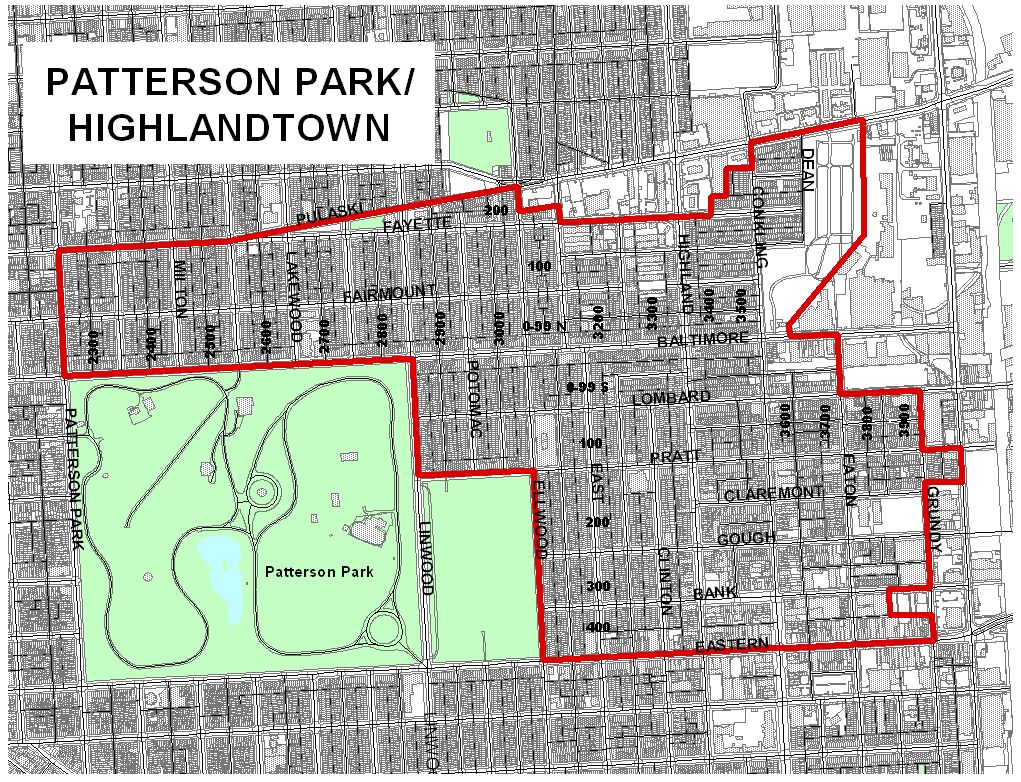Patterson Park and Highlandtown Historic District
National Register of Historic Places: 12/27/02
Description
 The Patterson Park/Highlandtown Historic District is a remarkably large material representation of Baltimore's settlement patterns created by waves of European immigration. These immigrants, who established ethnically heterogeneous neighborhoods within this district, provided the labor essential for the growth of Baltimore's industrial base. First settled in 1867, the Patterson Park/Highlandtown Historic District illustrates the role city annexation, industrial development, and home ownership played in shaping land use patterns of the city. Patterson Park/Highlandtown's period of significance begins with the first settlement of the area in 1867 and lasts until 1952.
The Patterson Park/Highlandtown Historic District is a remarkably large material representation of Baltimore's settlement patterns created by waves of European immigration. These immigrants, who established ethnically heterogeneous neighborhoods within this district, provided the labor essential for the growth of Baltimore's industrial base. First settled in 1867, the Patterson Park/Highlandtown Historic District illustrates the role city annexation, industrial development, and home ownership played in shaping land use patterns of the city. Patterson Park/Highlandtown's period of significance begins with the first settlement of the area in 1867 and lasts until 1952.
The area is a surviving example of the unbroken streetscapes of modest row houses that once characterized middle class housing in Baltimore. While many of the row houses have been altered over time, these alterations are inextricably linked to the persistence of home ownership that characterizes the neighborhood and the democratic ideals of urban row house living. Changes such as the application of Formstone and the installation of first floor picture windows testify to the owner's continuing commitment to their neighborhood, a neighborhood still knit together by public transportation and pedestrian traffic.
Significance
The Patterson Park/Highlandtown Historic District is a large area (approximately 120 blocks) in East Baltimore City. Bound by Pulaski Highway on the north, an industrial corridor on the east, Canton Historic District on the south, and Butchers Hill Historic District on the west, the area retains elements such as painted screens, window displays, planters, and decorative seating areas characteristic of Baltimore's row house-based residential folkways. Churches, schools, corner stores, and scattered small-scale industrial buildings are interspersed among the row houses in a manner characteristic of communities knit together by foot and streetcar transportation.
The area is a part of the National Register of Historic Places because of its associations with Baltimore's working class settlement patterns and because it exemplifies Baltimore's row house neighborhoods. The district is characterized by commonplace buildings representative of local architects like Watt & Nolting, John Zink, and E. Francis Baldwin. Less than 1% of the structures constructed before 1952 have been lost.